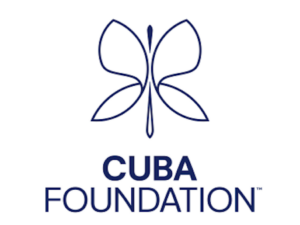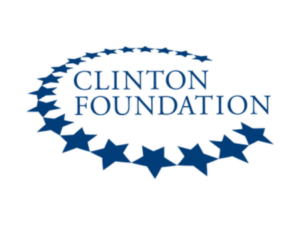Malaria No More mobilizes the political commitment, funding, and innovation required to work towards ending malaria within one generation. The work raises awareness and builds a global movement to end malaria and show the connections between global health risks and climate change.
Martin Edlund of Malaria No More spoke with Ashley Hopkinson on November 21, 2023. Click here to read the full conversation with insights highlighted.
Ashley Hopkinson: Can you please introduce yourself, your organization and tell me about the larger problem that your organization is setting out to solve and how are you working toward solving it?
Martin Edlund: I’m Martin Edlund, CEO of Malaria No More, and also Executive Director of the Health Finance Coalition, which is our blended finance work.
As the name of our organization implies, Malaria No More has a clear and focused mission that we describe as nothing short of trying to eradicate humanity’s oldest, deadliest disease: malaria. Bill Gates calls it the worst thing on the planet because it’s one of the top killers of kids and pregnant women around the world.
In many places, it’s the biggest cause of school and work absenteeism, so it’s a massive drain on opportunity and human flourishing. Not to mention it’s killed more people than any other disease in human history. We started 17 years ago with the mission to create change at the scale it would take to end malaria completely. Over time, as we’ve made progress — and we’ve made great progress — deaths are down about 55% globally. Thirteen million lives have been saved, 2 billion cases averted, and $2 trillion in economic benefits have been unlocked for some of the poorest communities on the planet.
As we’ve made progress, we’ve run into new challenges, and the one that we’re really focused on right now is climate change and the new pressures that it’s putting on health. Health has not been a major focus of the climate conversation, but with examples like the flooding in Pakistan last year, the year-long cholera outbreak in East Africa and Malawi, and extreme heat, we’re seeing that these increasingly frequent and furious extreme weather events become extreme health events. This is making it a lot harder to accomplish our narrow mission of ending malaria globally. We’re doing a lot of work thinking about how we take the lessons, networks, and capabilities that we’ve built over 17 years to position malaria and apply them to a broader set of needs and risks that are at the intersection of climate and health.
Ashley Hopkinson: What are you hoping that people will respond to regarding this shift in focus, and what are you hoping people will gain from this change?
Martin Edlund: Back in 2005 and 2006, when we started, malaria wasn’t on the agenda, but in response to the AIDS crisis in Africa, and a confluence of factors, global health was prioritized. We wanted to ensure that — as the world made commitments — they translated to saving as many lives as possible, that resources were maximized, and initiatives that would make the biggest difference in people’s lives were prioritized.
We saw a lot of success in that, and so did our partners. We went from a few hundred million dollars being spent per year on malaria to almost $4 billion being spent per year, mostly through institutions like the Global Fund to Fight AIDS, TB and Malaria, the US President’s Malaria Initiative, and Malaria No More.
A big part of what we tried to do at first was mobilize resources. We built teams in all the donor countries, and we continued to help maximize resources. Then, we had to make sure that they’re spent well and things are used on the ground. We were able to help set a global goal of universal bed net coverage in Sub-Saharan Africa. We went from 17 million nets distributed a year to 175 million nets distributed a year in the space of three or four years. Today, we’re distributing about 200 million nets per year. A big part of the next phase was figuring out how to partner with and support countries to implement those programs.
We did that in a couple of ways. Our founder, Ray Chambers, partnered with President Kikwete of Tanzania to create something called the African Leaders Malaria Alliance. Today, 49 African heads of state have committed to ending malaria, and they’re tracking their progress in terms of finance and reporting coverage of essential interventions across 18 metrics on a quarterly basis. It’s been really important to support local leaders to create that sense of accountability and measure those impacts.
Those efforts at a broad scale have led to real impact. I think we’re at a moment now where the world is changing, and the context is changing for this work. I like to say that global health faces a perfect storm of challenges: financing, drug resistance, and competing priorities. But now, part of that perfect storm is the actual storms themselves. Climate change is a new pressure. Climate financing doubled in the last year. The world is spending about $1.3 trillion per year on responding to climate change. About half of that is public sector finance, and half of that is private sector finance. The overwhelming majority focuses on mitigation. How do we speed up the energy transition?
We can’t forget health in that context. We’re seeing devastating health consequences from climate change at 1.2 degrees Celsius warming. We talked about some of those things, but extreme heat, unbreathable air from wildfire smoke, infectious disease, certainly malaria and dengue; we’re in the midst of the worst dengue year globally on record. There are estimated to be about 500 million dengue cases this year globally, including lots of new latitudes and altitudes that had never experienced malaria and dengue before. We’re seeing waterborne diseases really proliferate.
Already today, at least 12 million people are dying each year from the direct health impacts of climate change. In the latest reports, the World Meteorological Organization projects that before the end of the decade, we’re going to breach 1.5 degrees Celsius warming, just for one year, but we’re inching toward that on a sustained basis. All of these challenges that we’re seeing so vividly today are going to become magnified in the future. I think the climate challenge is going to define the rest of my career and work in global health. The world has just shifted under our feet. If you look back at our focus on prioritizing the highest impact intervention, mobilizing resources, building capacity, and empowering local leadership, all of those lessons need to be applied at an even bigger scale around climate and health.
Ashley Hopkinson: With that shift in focus toward climate and its impacts on health, what will change about your engagement? I know you’ll still be serving across the African continent, but will you try to reach the same people? How are you going to reach people and make sure they benefit from the work that you’re doing?
Martin Edlund: I think it’s a lot of the same people. Tragically, the countries that did the least to contribute to the CO2 burden and budget are the ones that are bearing the brunt of the effects of climate change. The latest IPCC [Intergovernmental Panel on Climate Change] report says that there are about 3.3 billion people who are highly vulnerable to the effects of climate change. When you look at that map, it is almost exactly the same as the malaria map. It is low- and middle- income countries in tropical settings who are bearing the brunt here. So we’re very much serving the same people, but there is a broader set of needs and opportunities.
Thinking about money capacity solutions as part of a value chain, right now, the money’s not there for climate and health. The wealthy world made a commitment to spend about $1 hundred billion per year in low- and middle-income countries to address the climate crisis. They haven’t reached that goal yet, and they’re a few years behind.
But even within the money that’s being spent, an almost negligible fraction, about half a percent, is being spent explicitly on health in the context of climate change. Contrast that with the World Bank’s study that showed as many as 132 million people could be driven into extreme poverty by the impacts of climate change by the end of the decade. When they dug into the big drivers there, the biggest single driver was the climate’s impact on health. So 44 million people, which is a third of the total at-risk population, would be driven below that extreme poverty line of $1.90 a day because of the climate’s impact on health.
At least a third of the problem is health-related, yet only half a percentage of the money the world is spending on climate is focused on health. So the first thing we need to do is make a clear and compelling case. I like to say: Making health the human face of climate change. Another way to say it is putting health at the center of climate action and investment. And if we can do that, we should be able to mobilize substantially more money. Our goal, and we’re working closely with big financing organizations like the World Bank and the Global Fund, among others, is that at least 5% of that $1 hundred billion per year is being spent on health. So $5 billion per year, and over the next seven years, $35 billion.
I see an opportunity to accomplish that. We could get really geeky here, but working with the World Bank to convene 14 other multilateral development banks, and working with the Global Fund to help them think about how to build a common investment pipeline with climate funders like the Green Climate Fund, I think we can get to something like 5% of climate spending in the developing world focused on health. Then the question becomes: How do you make sure countries have the capacity to use that funding well? We’ve partnered with a group called the Clinton Health Access Initiative, or CHAI. CHAI is a remarkable organization. They’re present in more than 35 countries, and they have embedded support from governments. They sit on the side of governments and they help with technical solutions and problem solving.
As we think about work with CHAI, we consider: How can we help countries clearly define and quantify their climate-driven health risks? How can we help them translate those to cost scale-up plans around solutions and interventions? How do we help them access this $35 billion in financing to scale those solutions? The last thing then is making sure the money is spent really well. I do think the world will step up with new resources. The examples are too vivid and dramatic for the world not to respond, especially since there’s such a tension between emitting countries and affected countries in terms of climate. My biggest fear is that the money gets spent poorly and doesn’t translate to saving lives. We’re doing a lot of thinking about what solutions are the big bets or best buys in the context of climate change, and what we can scale. We’ve been working with partners to help develop and prioritize a few of those.
Ashley Hopkinson: We talk a lot about system change and what can be done to advance it. What is the organization doing to advance system change?
Martin Edlund: We call ourselves a leverage organization, and it’s always been about system change. How do you build the ecosystem to enable the kind of change that we want to see? It comes down to a few factors. One is recognizing that big ideas inspire. You need to be able to articulate a clear and compelling vision, and you need to partner between private sector innovation and the public sector, like political will, financing, and implementation to do things at scale. We did that over 17 years with our malaria campaign, and now we’re seeing that take shape in the climate and health intersection. We’re doing that in a couple of ways.
Four years ago, we created something called Forecasting Healthy Futures. It’s a partnership and policy platform that now has more than 220 partners involved. We’re getting academics, technical innovators, private sector, country leaders, frontline managers, and finance organizations into a conversation about health solutions in the context of climate change. It was at a summit that we hosted in Abu Dhabi in March that the government of UAE announced that the first Health Day would be happening at COP28 this year. Convening and trying to push forward that conversation is one priority.
Then, we need to cement this climate and health connection and elevate human stories that are going to inspire the kind of action we need to see. We’ve partnered with Time magazine to create a campaign that we’re calling the Face of Change, health as the human face of climate change. It flips the typical campaign model on its head. It’s all crowdsourced, it’s open source, so people can use the resources. It’s also white-labeled, so it’s not about our brands; it’s about equipping partners. It starts with stories. How do we elevate stories? We’re working with a network of more than 650 civil society organizations across Africa, Asia, and LATAM [Latin America] to surface those stories. Even the creative work is open source. We put a call-out to the world, and we got more than a hundred submissions. We ended up working with a fierce designer, a woman named Laís Sambugaro in Brazil, who created this beautiful imagery.
We put out this question: How do we make health the human face of climate change? Laís came back with a literal response to that, which was: Let’s get portraits of frontline innovators who are advancing solutions and marry them with pictures of nature and distress. The idea is to start a conversation and open the door to a story. We want this campaign to be story-led, hero-led, and solution-oriented.
Ashley Hopkinson: That is amazing. What do you need from other partners or actors? What would be helpful on this journey to make people understand the connection between climate and health?
Martin Edlund: Campaign stories. We want to surface stories. We’re working with great storytelling partners, like Time magazine. The filmmakers behind David Attenborough’s planet films have created a platform called Open Planet, which is open-source video, so everything they shoot out in the world becomes a resource for local activists. We want to flesh that out with really compelling stories of human health and solutions. We’re also working with Snapchat and creating a lens where you can put your own face on your own nature image and tell your own story.
We need partners to engage with and use this content. The ecosystem beyond the campaign needs to prioritize country, capacity, and leadership to implement these solutions. We’ve created a joint venture with CHAI that we call the Climate Health Impact Lab, or CHIL (pun intended). CHIL is focused on how we connect with these countries. How do we help them to identify their needs and their capacity gaps? How do we elevate the political voice of health decision-makers at a country level? Right now, health is not at the table for the climate conversation or the conversation around how countries decide to apply for financing from the Green Climate Fund or the World Bank.
Ashley Hopkinson: When you talk about the “political voice of health decision-makers,” do you mean ministries of health, specifically?
Martin Edlund: Ministries of health, but also municipalities in some cases. A lot of these challenges are going to hit urban areas, and city centers. Dengue is an urban disease, so it’s not enough for the minister of health to be involved. You need the health commissioner to be involved. You need help developing cost plans and scale-up plans. We’re thinking about the whole value chain, and we can only do a tiny piece of it, but hopefully the work that we can do is catalytic and crowds in other partners, gets them doing what they’re uniquely capable of doing.
Ashley Hopkinson: Stories and health narratives are really powerful. Do you have a story of impact from your organization that you think illustrates how this work has made a difference?
Martin Edlund: I would say there’s the top-down story and the bottom-up story. The top-down story is how we have elevated this issue of malaria and secured resources for it. When we started, we had papers plastered all over our office walls, with one word on each page: massive urgent global crisis. That’s what we were focused on. We needed to let people know that malaria was a 9/11 every day. Mosquito bites were killing more than 3,000 kids daily. It started with just getting the information out there. Then we did this in response to compelling new tools and insecticide-treated bed nets, called ACT treatments. How could we put resources behind those at scale? We’ve been able to help move the system and make malaria the second-best-funded global health issue after HIV/AIDS.
From a cost-effectiveness standpoint, the single most cost-effective way to save a human life on the planet is to prevent and treat malaria. It’s been interesting to see the effective altruism movement grow up and embrace that idea. I like to call ourselves proto-effective altruists. We were really prioritizing that back in the day. That’s the top-down story of that system change leading to impact at scale.
Along the way, it’s been about being open to innovators, especially local innovators. You’re never going to find the same solutions from the outside, from the top down, that someone living in a community can. For example, when we started to move hundreds of millions of bed nets per year, there wasn’t a culture of net usage in Africa. Only about 1% to 2% of people had access to that information. How do you create that culture? I lived and worked in Senegal with Youssou N’Dour, the singer and former presidential candidate, and he had brilliant ideas for how to do that. But one of the best ideas came from a father, who lost his daughter to malaria. She hadn’t been sleeping under a net, and she was 11 years old, which is older than most kids die. He committed to never let another child in his community die from malaria. He organized the community and created this volunteer core of people who would go out and ring a bell at dusk, as the mosquitoes were coming out, to remind parents to get their kids under their nets.
They slept that way. It’s such an intuitive and simple thing. It started to spread, throughout his village and into surrounding villages. I’ve lost track of the numbers, but there was a time when something like 10,000 families in the surrounding areas were using nets, and it had been five or so years since there’d been a malaria death because they were so vigilant in this practice. It is really about marrying those top-down and bottom-up solutions.
Ashley Hopkinson: Do you have an insight or take away from the work you’ve done that someone can learn from, or a teachable lesson that you want to share?
Martin Edlund: One of them is, big ideas inspire, and you need to have a clear, salient, and compelling goal. We talk about this organizationally, in terms of scope and hope. Tackle big, inspiring problems, but do it with a wedge. Do it with a simple and clear scalable solution that gives you traction and allows you to make transformative change. For us, the scope of the problem is huge. Malaria is the world’s oldest, deadliest disease. The bed net was the hope, the wedge, the thing that we could scale, and it became a symbol for that issue.
I’ve already talked about doing this work in conjunction with others, through public-private partnerships, which is hard. Governments are slow, big multilateral aid institutions and local technical agencies are slow, but if you want to get to scale, if you’ve picked a big problem, then you need solutions that will scale. The only way to do that is through public-private partnerships.
I think a big lesson for me is that you need to touch people’s hearts, and you need to inspire them to make big changes happen. We do a lot of advocacy work, and oftentimes when you think about Congress and appropriators and how you compel people, there are arguments, and there’s data, and speaking to understand their issues and adapting your messaging. All of those things are needed, for sure. But we can’t lose sight of the human side and the stories that we need to tell along the way. Although it may not be a widely held belief, members of Congress are people too, and they’re open to inspiration. Leaders and decision makers are people too, and they’re open to inspiration. We can’t lose sight of the human side and the stories we need to tell along the way.
We’ve taken an incubator approach, partnering with the right partners and supporting them to lead on things. It’s not about trying to do everything yourself. I mentioned Youssou N’Dour. We also created country platforms where we supported bed net scale-up. We spun those out, and two of the most effective advocates and civil society organizations in Africa started as our country offices. Then they spun out as their own things, and they’re amazing.
Ashley Hopkinson: It is really cool that change-makers are heading out and making their own change in their own areas.
Martin Edlund: I recruited Yacine Djibo, who leads something called Speak Up Africa, from her family’s insurance business to take over our Malaria No More Senegal. She spun it up into something much bigger across the region, and she’s totally kicking ass. Olivia Ngou, who we hired to lead our Cameroon operation, turned it into her own organization, Impact Santé, and a network of more than 200 civil society organizations called Civil Society for Malaria Elimination. It’s a great example of being an incubator for entrepreneurs who then achieve outsized impact on their end.
Ashley Hopkinson: Can you talk about what you might take from those insights into the shift you want to make in ensuring people see the intersection between climate and health?
Martin Edlund: I think the scope is profound. We are experiencing a climate-driven health crisis that outstrips anything that we’ve experienced as a species. COVID was certainly devastating. About 3 million people died globally from COVID over a three-year period. 12 million people are dying every year from the direct health effects of climate change. So we’re talking about four COVIDs a year, year in and year out, and yet we’re spending only half a percent of climate financing on it. So I think the challenge, the scope, is certainly there, and we’re seeing it expressed in all these specific ways: dengue, malaria, cholera, extreme heat, wildfire smoke. There are two wedges that we’re thinking about. First, can making health the human face of climate change be a positive tipping point? Can it inspire the kind of action that we need?
We need to be careful as a health community that we don’t show up in the climate conversation looking like we’re just self-dealing. This isn’t just about stealing a little bit of the precious and inadequate climate financing for health. It’s about answering a need within the climate conversation. It has been so focused on convincing the world of science that it’s lost track of the human element. If we do this right, I think it’ll not only inspire us to save millions of lives today from the direct health impacts of climate change, but also save billions of future lives by inspiring investments, and accelerating the energy transition so we don’t find ourselves in a 2.5 degree Celsius world, which you can’t adapt to. There’s a point beyond which it becomes existential.
The other thing is just learning that there are big bets or best buys, solutions that can scale. If we can prioritize some of those solutions in the early running and show that they work, then the money will flow. For example, in the space of malaria, flooding risk in Africa has grown tenfold since the 1970s, twice as fast as for the rest of the world. There’s a lot more risk of outbreaks, and malaria is in new areas, but there are some really simple things we can do. There’s a strategy called seasonal malaria chemoprevention, and essentially what you do is you give at-risk kids a $1.50 pill once a month and it shuts down the risk of malaria. They will not get malaria, and they will not become a reservoir for malaria and pass it on to others.
Today, 44 million kids a year benefit from this intervention, and it’s caused about a 75% decline in clinical malaria cases in the communities where it’s done. We’ve just done some modeling on behalf of the Global Fund. If you look at new geographies and new age groups, there’s a total universe of about 350 million kids that could benefit from this in Africa. You could really scale this and eliminate that climate-driven risk of malaria outbreaks.
Dengue is another example. It doesn’t kill as many people as malaria, but it is absolutely devastating. They call it breakbone fever. It’s incredibly painful to have people lose about two weeks of work or school when they get a dengue case, and we’re seeing it explode. Yet to date, we’ve had almost no tools to fight dengue. The only thing we’ve had is insecticide. We don’t even have treatments where if you get dengue, there’s something you can take. You just have to suffer through it. But we’re right on the verge of transformational tools, new vaccines, new therapies. One that I’m really excited about is a mosquito technology, called Wolbachia, which is a naturally occurring bacteria. What you do is you infect the mosquito eggs, you turn them into adult mosquitoes, and then you release them into the wild, and within seven to 12 generations, they actually infect all the other mosquitoes in a population, and it just shuts down arboviruses, including dengue, chikungunya, yellow fever, and Zika. They just did a big randomized control trial in Indonesia that was published last year. It showed an 85% decline in severe dengue cases, hospitalizations, and deaths, and a 77% decline in total dengue cases, from this one-time intervention. That’s the kind of thing we need to scale at this moment, as dengue risk becomes so much more pronounced.
Ashley Hopkinson: How would you say you’re measuring success? How do you chart out what you are achieving and where you’re advancing and making progress?
Martin Edlund: It comes back to being a leverage organization. Our board is deeply involved, but we’re always thinking about where our board, our team, and our partnerships can have the most leverage. We measure things that are proximate to us, that we can control, to the extent you can control any outcome. For instance, we have a profound sense of responsibility around resource mobilization for the malaria campaign. We measure ourselves against the $1.7 billion per year that the US government spends in its annual budget on malaria control because we’re talking directly to those decision-makers. We’re making the case.
We also measure ourselves at the other end. What are the outcomes and are we tracking toward success? If you’re a system change organization and a leverage organization, you end up taking a profound sense of responsibility for the whole problem, and that’s how we feel about it. So it’s always about those two things. The things we’re doing are designed to create systemic change. You have to measure big outputs, like overall financing, overall lives saved, and cases reduced, but then you’ve also got to find those proximate metrics that allow you to measure your day-to-day work and how you’re doing. We try to live in both worlds.
Ashley Hopkinson: What would you say makes your organization distinctive?
Martin Edlund: There are a lot of amazing organizations out there. There are very few that see the world the way that we do, that take on the biggest problems and take responsibility for those problems. That leads to a very different way of working. It isn’t about the resources that flow through our organization. We don’t measure success by how many tens of millions of dollars are coming to us and what we’re implementing on the ground. It’s about how our success is our partner’s success, and that’s a different orientation.
If you’re taking a system change approach, then you have to be highly adaptive. It leads you to work in an agile methodology like Silicon Valley does, where you start a body of work and you constantly adapt as you go. You know the big end goal, and you have a starting point strategy, but you know it’s going to change and evolve a hundred times as you’re working toward the big goal. I gave the malaria example, and how we created the goal around the bed net and mobilized the money. Then the challenge was the adoption of bed nets and the local capacity to implement these programs. You work your way downstream through those problems.
This idea of being an incubator and creating joint ventures in order to do the work means you don’t have to build all the capacity yourself. You can play a role in helping to empower others to solve problems, or you can bring your strengths and marry them with others in really unique models, like we have done with CHAI around the Climate Health Impact Lab. Those are different ways of working.
Ashley Hopkinson: How will you take that distinction and move it into this new iteration that you’re seeing? Are you taking your distinctive approach with Malaria No More and moving it into storytelling partnerships?
Martin Edlund: Yes, we’re trying to, certainly. It’s hard. In the early days of the malaria community, we were seen as disruptors, and frankly, we weren’t all that welcome at the party. There were a lot of organizations that were doing parts of the work, and they were happy doing them. They didn’t want someone coming in and saying, “Let’s do it differently.” We’ve become core partners in the malaria community, so we work really closely with the Global Fund, the African Leaders Malaria Alliance, Bill Gates, and that entire ecosystem of partners.
We feel pretty comfortable in our global health lane, people know us and we know them, but now we’re moving into a new arena. We’re trying to reinvest in those lessons and see how we adapt them here. It’s an interesting reminder as we move into a new space that you’re not always welcome when you try to do things differently. There are incredibly fraught politics in the climate space.
You also need to pick your moments appropriately. I have come to believe that there are moments of plasticity in the world when things can change dramatically, and in the past, we were probably luckier than we were smart. We rode a wave in the mid-2000s where global health was ascendant. The MDGs [Millenium Development Goals] were ascendant. You had Product Red and Bono and all these people out in the world raising awareness, and we were able to capture and ride that momentum to build resources and solutions around malaria. Oftentimes, plasticity is created by crisis, and I think we’re seeing a moment of plasticity now around climate and health. Ten years from now, you’re not going to be able to affect the same level of change on this issue as you can over the next two years. It does feel like we need to capitalize on the moment when this ecosystem is being shaped, when the scale of resources is being defined, and the metrics for those resources and investment strategies are being defined. We need to demonstrate some big early wins that can shape the space.
Ashley Hopkinson: Aside from the need to make sure there’s sufficient funding to remain sustainable, what are some challenges that you have faced, or that you’re currently facing?
Martin Edlund: Let’s be honest; this work is really hard. I can talk a good game about outcomes and change, but doing it is really hard. It’s a mission, not a job. As a small but mighty organization, how do you pace yourself? How do you do this in a sustainable way? I can tell a great and linear story, but it’s never linear in the moment. It’s super messy as these things are happening, and that’s just the reality.
We’re in a messy moment on the climate and health side. One of the challenges organizationally is how to evolve with intention, in a way that both recognizes that you don’t know the right answers yet and you’re going to experiment, but also in a way that brings people along, brings your board along, brings your staff along. I’ll be honest, I have stressed this organization over the last year as we’ve moved into these new spaces because we’re maintaining our malaria mission, and we’re expanding into this new fertile territory. Those are real challenges from a leadership, operational, and inspirational standpoint.
Ashley Hopkinson: It could be inspiring for people to hear a lesson you’ve learned from something you tried that did not meet your original expectations. What would you take from that lesson into this new iteration?
Martin Edlund: I think you learn as much or more from failure as you do from success. I think one of the things I’ve learned to do reasonably well is hit refresh and reevaluate a situation. For instance, in the work around behavior change, communications, and net adoption in Africa, our original vision was that we would build out this network of country offices and have teams in Africa doing this work. We saw some real success in the approach, but it became clear that there’s no reason that we need to be the ones doing this. When you’ve recruited and helped to train and empower leaders like Yacine and Olivia on the ground, it’s time to hit refresh, reassess the situation, and say, “You know what? The best path here is figuring out how we support them to build and lead their own organizations.
Part of it is constantly reevaluating, being really clear about the end goal that you’re shooting for, and recognizing that there are different ways to get there. We’re absolutely applying that lesson at this moment. We’ve treated the last six months, since the announcement of Health Day at COP [Conference of the Parties] to Health Day at COP, so from the end of March to the beginning of December, as an explicit experiment. Now let’s try things. Let’s see what works. Let’s see where we get traction. Let’s see where the ecosystem responds. When we come back, jet-lagged and bedraggled, it’s going to be a moment to unpack all those lessons, hit refresh, and figure out what’s worked and where we go forward.
Ashley Hopkinson: That’s wonderful. I truly appreciate your time. Thank you so much. This was an inspiring conversation.
Click here to read the full conversation with insights highlighted.
Ashley Hopkinson is an award-winning journalist, newsroom entrepreneur and leader dedicated to excellent storytelling and mission-driven media. She currently manages the Solutions Insights Lab, an initiative of the Solutions Journalism Network. She is based in New Orleans, Louisiana.
* This interview has been edited and condensed.
Find other organizations working to end malaria.







